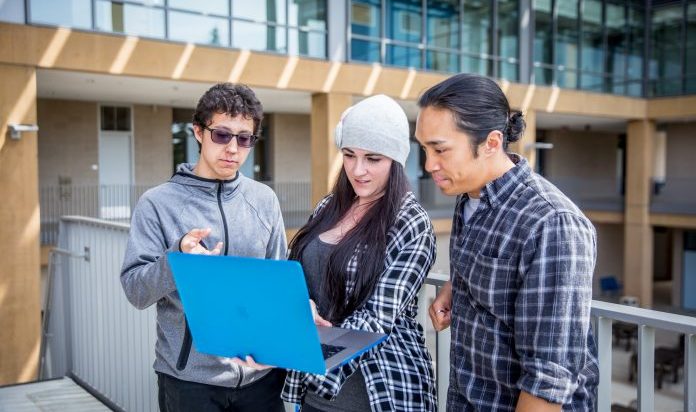Design to the Rescue: Students Give Local Nonprofits a UX Boost in Irvine

When UX/UI Boot Camp instructor Chris Becker tasked his UC Irvine students with choosing a local nonprofit to focus on for their final design project, he had one requirement: pick one that matters to you personally.
“The project centered around ownership,” he says, explaining that students were to apply everything they’d learned across the 24-week UX/UI Boot Camp at UCI Continuing Education
to help their chosen organization improve its web presence, campaign, or digital branding.
As with all design projects, empathy was key. “I’ve found that if you give students the ownership of the idea, they do a better job,” says Becker. “So the question was, who do you want to help?”
Making a connection
For Mathew Astengo, the answer was obvious: The Bidwell Gem Museum. The online museum celebrates the work and legacy of Larry Bidwell, a local Glendora science teacher who founded and ran the Glendora Lapidary Club for 40 years, fostering a community of rock and gem enthusiasts that reached across generations.
But despite its rich history, participation in the club has recently dwindled: Astengo is its youngest member by 30 years. He felt that redesigning the museum’s website could help better educate people about Bidwell’s work, and inspire them to support the community by purchasing creations made by its members.
“The problem with the [current] site is that it lacked the information and motivation for any visitors to want to purchase,” says Astengo. “We sought to get an emotional response from visitors that would make them want to help the cause and buy from the site.”
Other students in Becker’s class chose nonprofits with they felt similarly connected to, ranging from the Ocean Defenders Alliance, an ocean conservation group, to the Harmony Project, an organization that provides musical education to local youth. They teamed up into small groups, and over the next two weeks worked together to create a working prototype that they’d eventually present to the class.
An essential ingredient
For most nonprofits, design is considered a luxury. They simply don’t have the resources to invest. But as our world becomes more information-flooded, design is moving from a nice-to-have to a need-to-have piece of the nonprofit puzzle.
“Design is one of those fields of study that’s only going to get more necessary,” says Margaret Campbell, one of Astengo’s project teammates. “Every company, organization, this is the main way to get information out about yourself. And you want to make sure you tell your story well.”
A well-designed, engaging web experience can help visitors more quickly understand the what problems nonprofits are addressing, and how they can participate. “Are we making something that’s usable, useful, desirable, and delightful?” says Margaret, cycling through the questions she’s learned to ask herself throughout the UX/UI design process. “That’s where I can be most useful as a designer—to bridge that communication gap.”
Trusting the process
To execute their final projects, each of the teams used the double diamond design process that’s at the heart of the UX/UI curriculum. “Design isn’t just what something looks like” says Becker. “It’s a process of thinking through a problem, visualizing that thinking, and then using it to create something meaningful.” Students tapped the skills they acquired throughout the three-part course, from user research and lo-fi prototyping, to visual design explorations of color theory and typography, to ultimately coding their ideas using HTML, CMS, JavaScript, and bootstrap as a framework.
The idea is that by the end of the 24-week immersion, students will be able to quickly design and build working prototypes of their ideas. And that’s just what they did. More than just a web page, Becker explains, they build narrative experiences that elegantly articulate a problem, and lead users through an experience that prompt them to take an action—namely, to get involved.
Projects completed, lessons learned
“The requirement was 3 working pages, but most students did way more,” says Becker. “I get jazzed by the excitement of my students. They see how the end product can really change people’s understanding of the world. It’s exciting for people to see that difference.”
As for Astengo and his team, their hope is that The Bidwell Museum will eventually update the official website with their refreshed look, feel, and story. In the meantime, the process of speaking with users and redesigning the museum site taught Astengo an eye-opening lesson about the power of design.
“What I learned is that this [project] is about so much more than a lapidary club or building a museum,” he says. “It’s about a special piece of a small community that really deserves to be preserved and shared. I think that when a non-profit finds that story of their own, the real meaning behind that group can be presented.”
You can view the project presentation and web prototype for The Bidwell Museum here and here.

 Live Chat
Live Chat